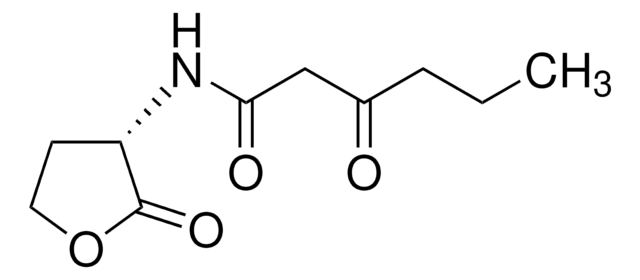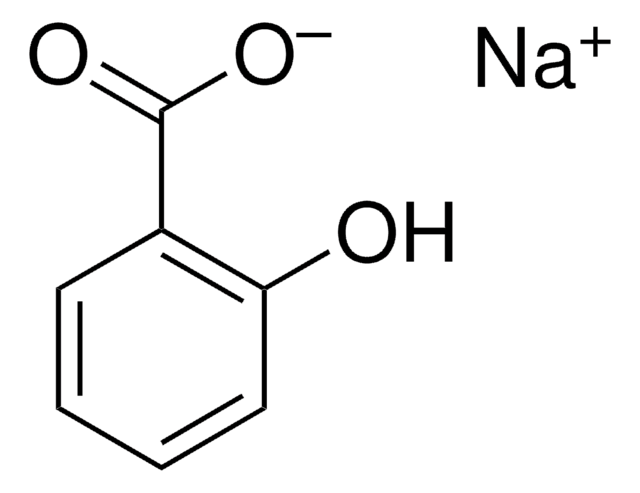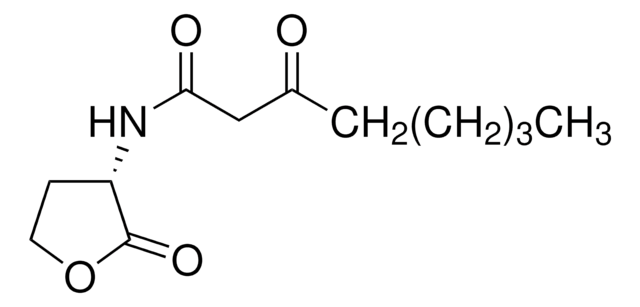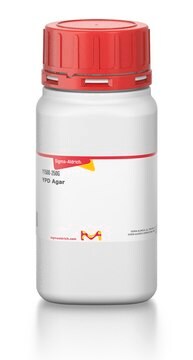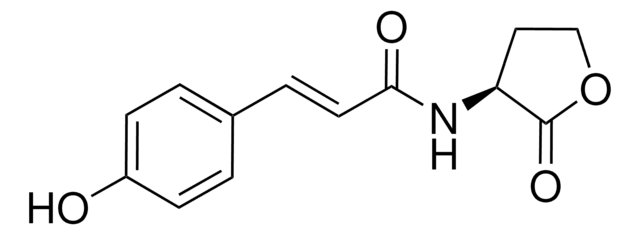51481
N-(3-Hydroxytetradecanoyl)-DL-homoserine lactone
≥96% (HPLC), carbon 64.7-67.3 %
Synonim(y):
3-Hydroxy-N-(tetrahydro-2-oxo-3-furanyl)tetradecanamide
About This Item
Polecane produkty
Próba
≥96% (HPLC)
skład
carbon, 64.7-67.3%
nitrogen, 4.0-4.5%
temp. przechowywania
−20°C
ciąg SMILES
CCCCCCCCCCCC(O)CC(=O)NC1CCOC1=O
InChI
1S/C18H33NO4/c1-2-3-4-5-6-7-8-9-10-11-15(20)14-17(21)19-16-12-13-23-18(16)22/h15-16,20H,2-14H2,1H3,(H,19,21)
Klucz InChI
IKQUESGRCDRZTI-UHFFFAOYSA-N
Działania biochem./fizjol.
Opakowanie
Hasło ostrzegawcze
Danger
Zwroty wskazujące rodzaj zagrożenia
Zwroty wskazujące środki ostrożności
Klasyfikacja zagrożeń
Acute Tox. 3 Oral
Kod klasy składowania
6.1C - Combustible acute toxic Cat.3 / toxic compounds or compounds which causing chronic effects
Klasa zagrożenia wodnego (WGK)
WGK 3
Temperatura zapłonu (°F)
Not applicable
Temperatura zapłonu (°C)
Not applicable
Certyfikaty analizy (CoA)
Poszukaj Certyfikaty analizy (CoA), wpisując numer partii/serii produktów. Numery serii i partii można znaleźć na etykiecie produktu po słowach „seria” lub „partia”.
Masz już ten produkt?
Dokumenty związane z niedawno zakupionymi produktami zostały zamieszczone w Bibliotece dokumentów.
Nasz zespół naukowców ma doświadczenie we wszystkich obszarach badań, w tym w naukach przyrodniczych, materiałoznawstwie, syntezie chemicznej, chromatografii, analityce i wielu innych dziedzinach.
Skontaktuj się z zespołem ds. pomocy technicznej